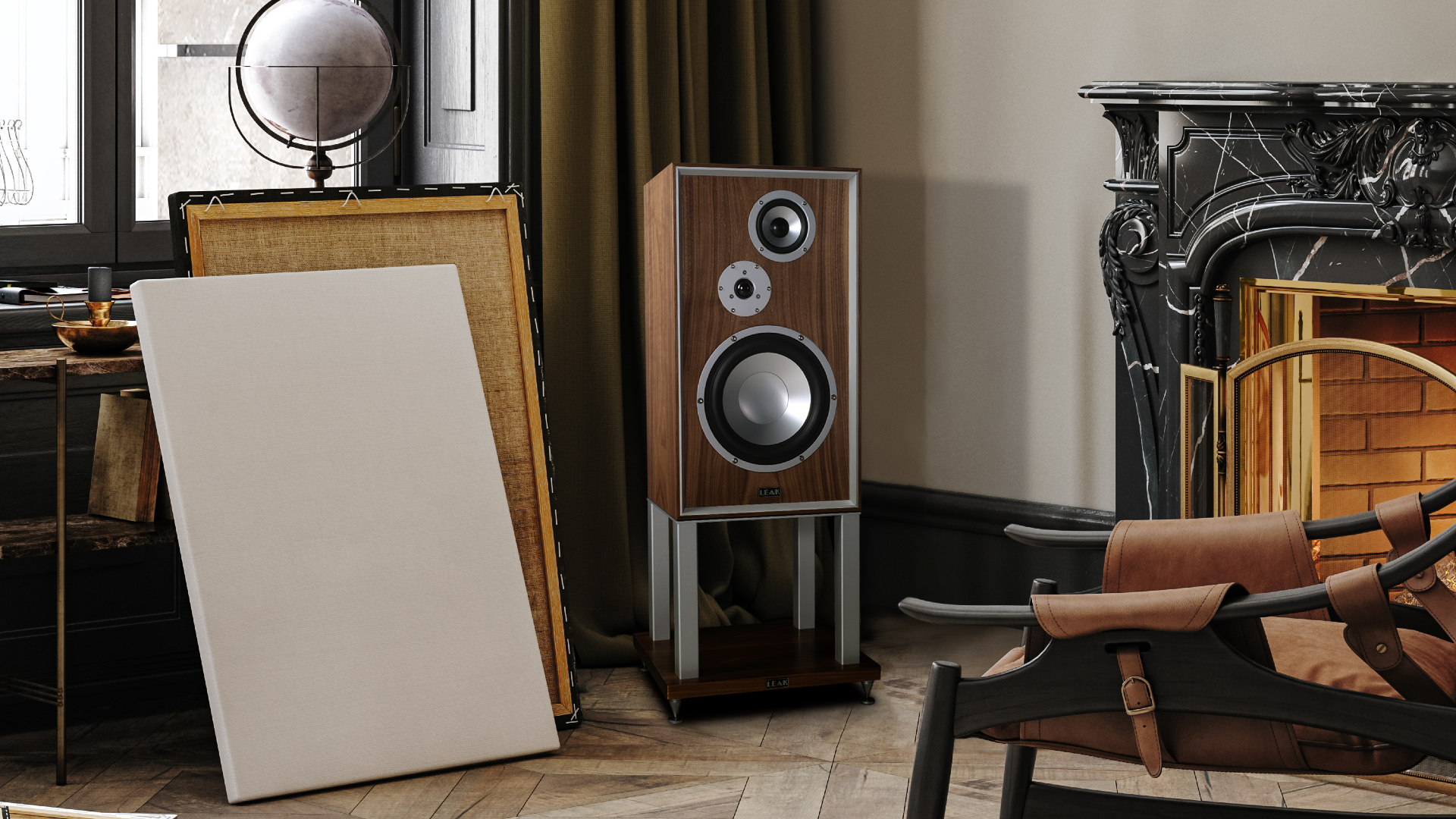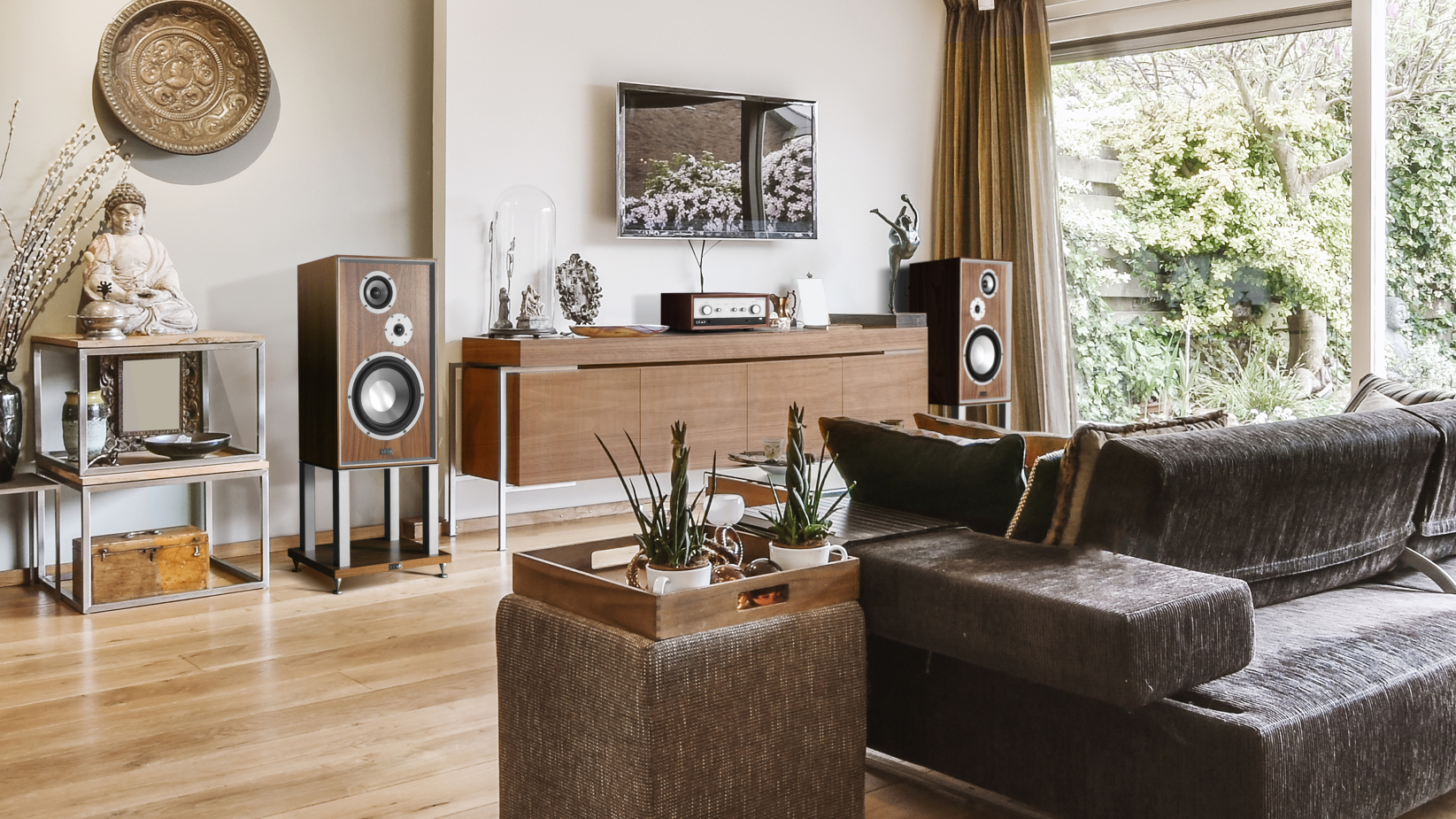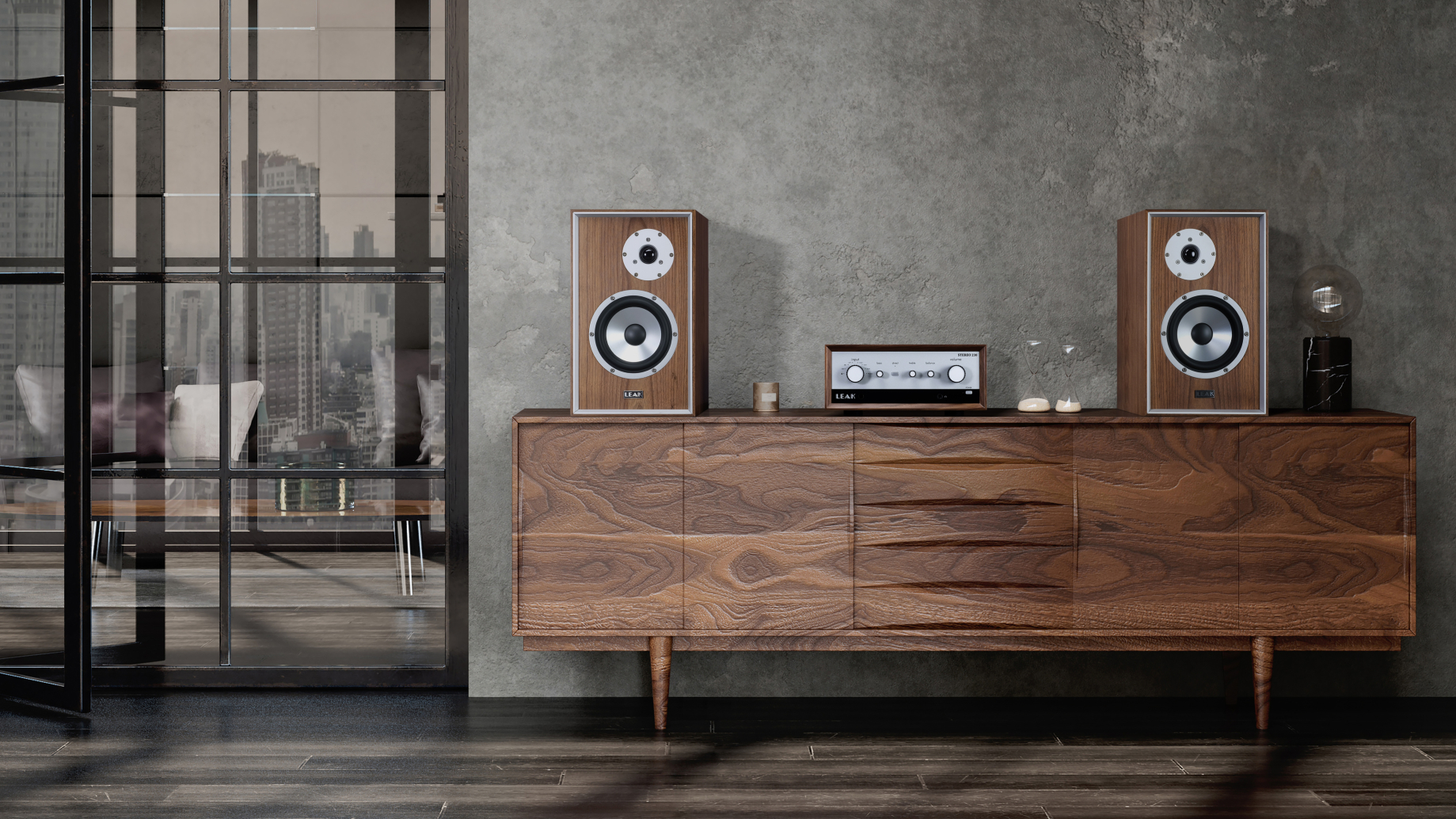I've waited 63 years for a Sandwich – but Leak speakers are always worth the wait
Hey Leak, wanna buy me lunch? These Sandwiches look tasty

Leak’s new Sandwich speakers can go right ahead and inherit the 1960s hi-fi room of my dreams – and potentially our best stereo speakers guide too. Just look at them.
Don't get retro-carried away though, Leak has used the ample R&D time since the inaugural 1961 Sandwich to fully rework its recipe, packing each of these two new Sandwich standmount speaker options full of modern tech.
The original Leak Sandwich speaker took its name from the then-unique build of its mid/bass driver. It was the first to be made from a 'sandwich' of different materials: expanded polystyrene foam between two sheets of aluminium foil. The result? A light yet stiff cone that reduced distortion for a snappier, more accurate sound – and a driver so rigid that founder Harold Leak was pictured actually standing on it in promotional shots at the time.
As you'd hope, the Sandwich 150 and 250 bring that idea right into present day 2024 by introducing stiff aluminium skin to the outer surfaces of the drive unit, bonded to a core of aircraft-grade polymethacrylimide (PMI) structural foam, which Leak claims delivers "immense rigidity".
The Sandwich 250 is the biggest of the two new models, it's a three-way standmount speaker versus the two-way Sandwich 150. Both sport a 30mm textile-dome tweeter, but the 250 combines it with 109mm midrange and 280mm bass drivers, while the 150 handles your music using a 170mm mid/bass driver. Leak's trademark Aluminium-Foamcore Sandwich cone features throughout, of course.
A superior Sandwich

At the back, the cabinets are dual ported, which should augment the bass response and make them every bit as fussy as I want them to be – this is hi-fi, we absolutely should be tinkering to get the best placement and compatible amplification and thus, the best sound.
And the sandwich theme continues in the cabinet build! A special glue filling (tasty) is placed between an outer layer of MDF and inner layer of high-density particle board for improved damping and of course you're getting Leak's spot bracing within the cabinet. Then, there's the walnut veneer applied by hand, aluminium driver trims plus an aluminium insert around the edge of the front baffle. In short, they're good-looking things.
Sign up for breaking news, reviews, opinion, top tech deals, and more.
So how much is this hi-fi grade meal going to set you back? The Leak Sandwich 250 is 65.5cm tall and costs $2,495 / £1,999 / AU$4,799 per pair, while the Sandwich 150 is 41.5cm high and comes in at $1,295 / £999 / AU$2,399 per pair – so a pricey lunch, but we're worth it.
Oh, and if you want the Sandwich 250 plus dedicated stands (which is an excellent choice, in my opinion), that'll be $2,995 / £2,299 / AU$569 all in.
For me, there's emphatically a place in hi-fi for both heritage designs (see Tannoy's Stirling III LZ Special Edition or the Sonus Faber Duetto) and the scarily futuristic (see Wilson Audio Alexia V, Ferguson Hill's transparent horn speakers, Fyne's F1 and the Sonus Faber Suprema system for starters), depending on your music source and what you want to pair them with. If you're going down the heritage route though, these speakers look incredibly gifted.
The Cambridge UK firm's Sandwich 150 and 250 arrive just ahead of the Bristol Hi-Fi Show, which means I'm hoping to catch a glimpse of them – and hopefully even hear them – in a week or so. Watch this space…

You may also like
- See our roundup of the best turntables you can buy right now
- Need something smaller and Bluetooth enabled? See our best Bluetooth speakers guide
- Take a high-end hi-fi trip with the 6 wildest audio experiences we tried at High End Munich last year

Becky became Audio Editor at TechRadar in 2024, but joined the team in 2022 as Senior Staff Writer, focusing on all things hi-fi. Before this, she spent three years at What Hi-Fi? testing and reviewing everything from wallet-friendly wireless earbuds to huge high-end sound systems. Prior to gaining her MA in Journalism in 2018, Becky freelanced as an arts critic alongside a 22-year career as a professional dancer and aerialist – any love of dance starts with a love of music. Becky has previously contributed to Stuff, FourFourTwo and The Stage. When not writing, she can still be found throwing shapes in a dance studio, these days with varying degrees of success.